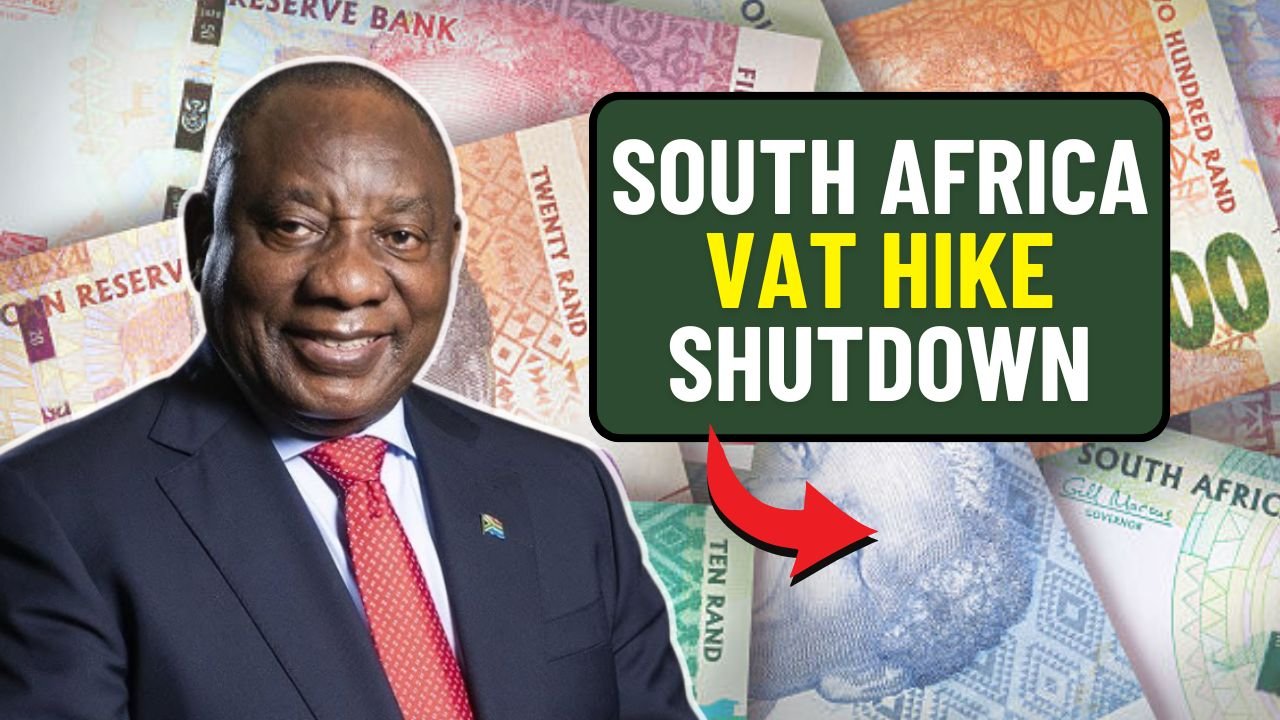South Africa is facing a significant fiscal challenge, with mounting pressure to address its growing budget deficit, which has surpassed R320 billion for the 2024-2025 fiscal year. Among the proposed solutions to stabilize the nation’s finances is a potential increase in Value Added Tax (VAT). With VAT currently set at 15%, the government is considering a hike to bolster revenue, but this proposal has sparked intense debate. While VAT is an effective and predictable revenue generator, its social implications, particularly for lower-income households, raise concerns.
The Importance of VAT in South Africa’s Tax System
VAT has long been a cornerstone of South Africa’s tax structure, contributing around 25% of total tax revenue. As the second-largest revenue stream after personal income tax, it plays a critical role in the country’s financial stability. In the 2023/24 fiscal year, VAT generated approximately R465 billion for the national treasury. Its broad base, taxing a wide range of goods and services, allows for reliable collection. However, this uniform approach to taxation raises concerns, particularly regarding its impact on various income groups.
A Burden on Low-Income Households
One of the key criticisms of VAT is its regressive nature. Unlike income taxes, which are proportionally higher for wealthier individuals, VAT applies uniformly to goods and services, disproportionately affecting low-income earners. Although the government has designated certain basic goods, such as maize meal, milk, and eggs, as zero-rated, many essential products remain subject to VAT. A proposed 1% VAT increase could lead to a noticeable rise in the cost of living for households already struggling with inflation, unemployment, and high living costs.
Real-World Impact of a VAT Increase on Households
For a typical South African household earning around R3,500 per month, even a modest VAT increase can result in a significant financial burden. Many essential goods are subject to VAT, and an increase in the tax rate could further strain already tight budgets. For example, a household that spends R1,200 on non-zero-rated groceries would see its VAT bill rise by an additional R9.00 per month. Though this may seem small, the cumulative effect could add up to R292.56 annually, a considerable sum for families with limited financial flexibility.
Reflections on the 2018 VAT Hike
South Africa’s last VAT hike occurred in 2018, when the rate was increased from 14% to 15%. At the time, the government aimed to address declining tax revenues and rising debt. While the move generated an additional R22 billion annually, it was met with widespread opposition. Civil society organizations, trade unions, and consumer groups decried the increased burden on the poor, even though the government attempted to offset the impact by expanding the list of zero-rated goods. Despite these efforts, the hike’s legacy left many low-income households grappling with higher living costs and diminished purchasing power.
Exploring Alternatives to a VAT Increase

While the VAT increase is viewed as an immediate solution to South Africa’s fiscal needs, many economists advocate for alternative measures that could generate revenue without exacerbating inequality. Strengthening tax compliance and cracking down on evasion could reclaim an estimated R300 billion annually. Moreover, introducing wealth-based taxes on luxury properties and high-value estates could ensure that the wealthiest South Africans contribute more equitably to the national treasury. Other measures, such as reducing wasteful government spending and privatizing non-strategic state-owned enterprises, offer additional paths to raise funds.
Understanding Who Will Bear the Brunt of the Tax Increase
A key concern of the proposed VAT hike is its disproportionate impact on South Africa’s most vulnerable populations. With over 55% of the population living below the poverty line, even a slight increase in VAT can destabilize household finances. Though approximately 18.8 million South Africans receive social grants, these payments often do not cover the rising costs of living, particularly when essential goods become more expensive. Additionally, small businesses, especially those in retail and food services, may face increased costs, which could lead to price hikes and reduced consumer demand, potentially resulting in job losses and decreased hiring.
The Broader Economic Implications of VAT Increases
The ripple effects of a VAT increase extend far beyond the immediate impact on consumers. Industries such as retail, transportation, and education are likely to experience higher costs due to increased VAT rates. For example, public transport providers may raise fares to cover the added cost of fuel and service, affecting commuters. Similarly, small businesses in the hospitality sector may struggle with increased input costs, which could result in reduced profitability and even staff reductions. These secondary consequences often go unnoticed in discussions about tax policy but have real-world implications for employment and economic stability.
South Africa at a Fiscal Crossroads
As South Africa confronts its fiscal challenges, the decision on how to raise revenue is crucial. A VAT hike may offer a quick fix to the country’s budgetary shortfall, but it carries the risk of worsening inequality, reducing consumer confidence, and further exacerbating poverty. The nation must decide whether to continue relying on regressive measures like VAT hikes or explore more progressive solutions that could generate revenue while addressing the needs of its most vulnerable citizens. In the long term, structural reforms, improved tax compliance, and more efficient public spending will be essential to ensuring a sustainable and equitable fiscal future for South Africa.

